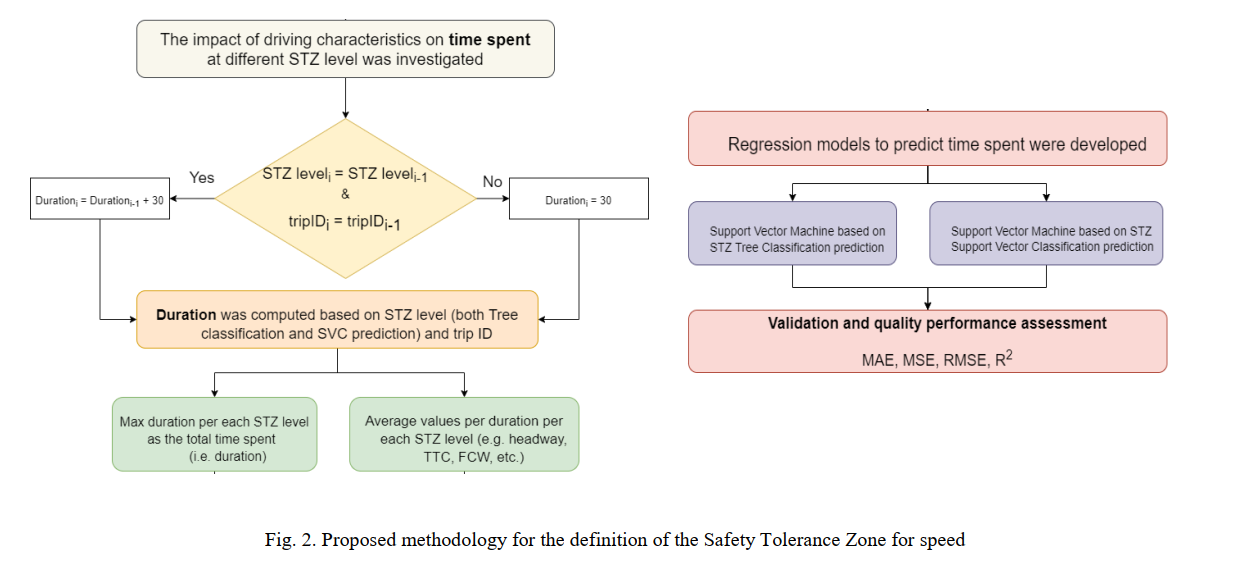
This paper investigates how much time is spent in three levels of a Safety Tolerance Zone (STZ) for driving speed. Towards that aim, a naturalistic driving experiment was conducted and data from a representative sample of 20 Belgian car drivers were analyzed. Two classification models (i.e. Conditional Inference Trees and Support Vector Machines) and two regression models (i.e. Support Vector Machine Regression) were utilized in order to successfully predict initially the STZ levels and then the time that drivers spent in each one. The results indicated that both classification models predict STZ levels with 92% accuracy, 96% specificity and 92% recall. Moreover, regression models could explain at least 81% of the variance, but further analysis is needed to minimize errors in duration prediction.
| ID | pc481 |
| Presentation | |
| Full Text | |
| Tags |













